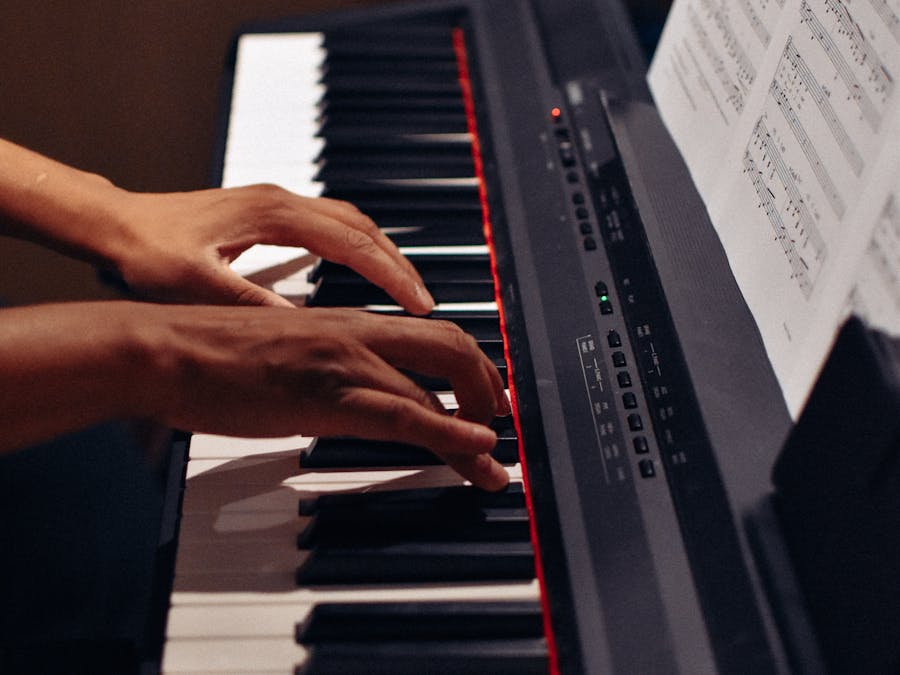 Piano Guidance
Piano Guidance
 Piano Guidance
Piano Guidance

 Photo: RODNAE Productions
Photo: RODNAE Productions
One piano lesson a week is enough for most people. In some cases, more than one lesson per week can be recommended. For example, a second lesson could be used to cover certain complimentary topics such as music theory, music history, or even piano technique.

Fixing your hat's crushed sections is super straightforward with a steamer. Let the steam envelop the hat section by section and knead the areas...
Read More »
You can only deal in ivory items that are exempt from the ban. There are standard exemptions: musical instruments made before 1975 with less than...
Read More »Thinking about taking piano lessons? This article will answer the questions How Often Should I Take Piano Lessons, and help clarify your decision before hiring a good piano teacher. How often should piano lessons be? Piano lessons are typically done once a week. This is the universal standard for most piano teachers. Having a week between lessons allows the student to practise the material at least a few times before the next lesson. This ensures that the material is well integrated before anything new is taught. Time between lessons also allows the student to develop good practise habits, which is just as important as the lesson itself. Is one piano lesson a week enough? One piano lesson a week is enough for most people. In some cases, more than one lesson per week can be recommended. For example, a second lesson could be used to cover certain complimentary topics such as music theory, music history, or even piano technique. In other cases, students may have difficulty working on the material on their own. This may be due to a lack of discipline, or it could be because of a learning disability or concentration issue. In these cases, a second weekly lesson can be used to review the material that was covered in the first. It can also serve to reinforce good practise habits in the student. How long should music lessons be? The average music lesson is one hour. This provides the ideal amount of time for a music teacher to cover the lesson material, answer questions and allow the student to practise the material. This length of time is ideal for adults, teenagers and certain determined kids. Most music schools also offer 30 minute or 45 minute options. A 30 minute music lesson is ideal for kids under the age of 12. Although some kids can handle a 1 hour lesson, most do not have the proper attention span or motivation and will get distracted before the lesson is over. A 45 minute music lesson can be a great option for students aged 10 and older. It also provides a less expensive option for the price conscious shopper, and still provides a decent amount of lesson time. How many lessons does it take to learn piano? First you need to determine what your goal is for learning piano. For example, if you are a beginner and your goal is to become proficient at reading music and playing simple repertoire like Amazing Grace, Au Claire de la Lune, or Jingle Bells, then most piano students can get there in 4 to 12 piano lessons. This is the equivalent of 1 to 3 months of piano lessons. If your goal is to become a high level jazz or classical pianist, then it will take years of training under the guidance of renowned piano teachers. According to a famous study by psychologist Anders Ericsson, elite musicians in the most prestigious music academies in world, practised their instrument on average 10 000 hours before reaching an elite level. That’s around 3 hours a day for 10 years. Important factors that will influence piano learning speed are age, inherent musical ability, practise habits and overall motivation.

The famous four chords used in many pop song progressions are the I, V, vi and IV chords of a major key. The roman numerals represent the numbers...
Read More »
Select first gear. Gently put pressure on the accelerator until revs reach around 1500. Slowly lift pressure from the clutch pedal until you find...
Read More »1) Sometimes what Satan says is true, to make us more ready to believe his lies. 2) Don't believe everything at face value. Be aware that liars can use the truth to trick us. Shakespeare may be alluding to this proverb in Macbeth (c1604) when Banquo says: "What, can the devil speak true?"

A mechanical keyboard uses individual switch for each key. Once you press the key down far enough and engage the switch on the key, it registers as...
Read More »
Verify if the company makes "do not copy" keys or if they're willing to make them for you. If you've already bought keys and you're not sure if...
Read More »
It's based on ostinato bass figures in 8/8 time, and mostly uses the 12-bar blues harmonic scheme. Mar 31, 2020
Read More »
three chords A standard blues progression, or sequence of notes, typically features three chords based on the first (written as I), fourth (IV),...
Read More »